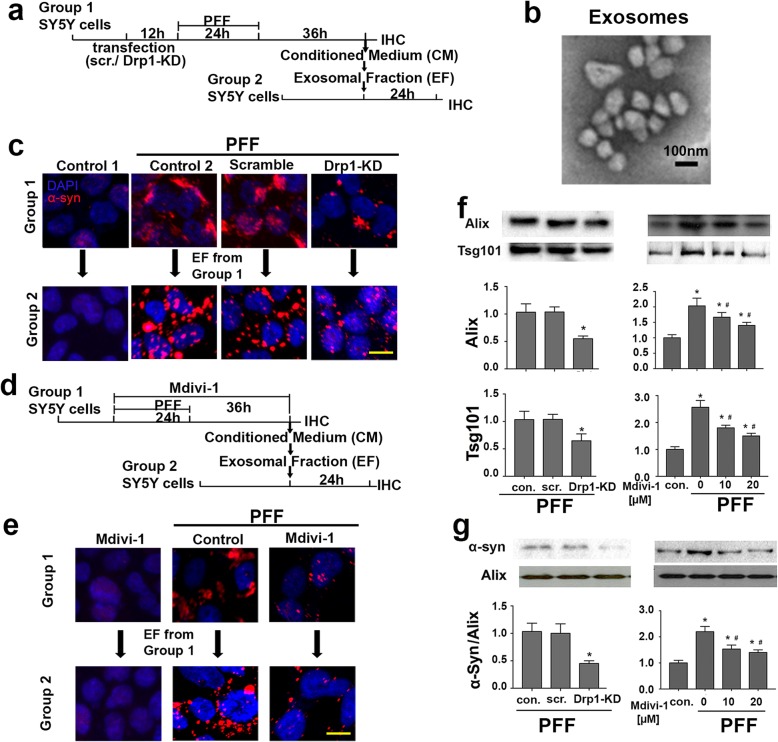Fig. 6.
Blocking Drp1 reduces exosomal release from SH-SY5Y cells treated with PFF. a Experimental design: SH-SY5Y cells were transfected with siRNA-Drp1 or scramble control for 12 h, followed by PFF (2 μg/ml) treatment for 24 h, and cultured for an additional 36 h after PFF withdrawal. Conditioned media (CM) were then collected for exosomal isolation and the remaining cells were immunostained for α-syn (red). Isolated exosomes were added to a second group of SH-SY5Y cells for 24 h and then immunostained for α-syn. b TEM confirmed micro-vesicles in the exosomal fraction to be consistent with the size of exosomes. Scale bar: 100 nm. c Immunofluorescence of α-syn in two groups of SH-SY5Y cells as described in a: Group 1 donor cells were treated with PFF and Group 2 recipient cells were treated with the exosomal fraction extracted obtained from the Group 1 cells. Control 1 received no PFF treatment, only vehicle control. Control 2 received no siRNA. Scale bar: 10 μm. d Schematic diagram illustrating SH-SY5Y cells treated with mdivi-1 and e immunofluorescence of α-syn (red) of the Group 1 donor cells and Group 2 recipient cells as described in c. Scale bar: 10 μm. f Equal volume of CM was loaded into each well for immunoblotting, and the amount of exosomes were quantified using Alix and Tsg101 as markers for exosomes. Data represent the mean ± SEM, (n = 6). g To quantify the amount of α-syn release, equal amount of exosomes were used for immunoblotting, and α-syn was probed against the loading control Alix. Data represent the mean ± SEM, (n = 4), One-way ANOVA followed by Newman–Keuls post-hoc testing.* p < 0.05

